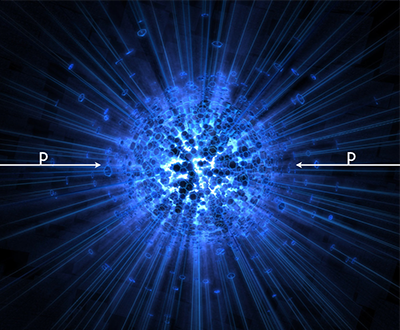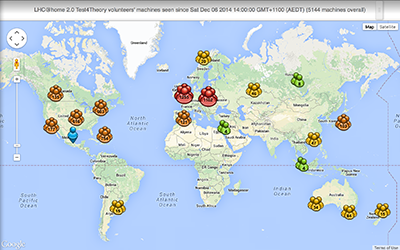
My Research
| |||||||||
|
Most of my work concerns the physical modeling of high-energy particle collisions. The solutions are cast in the form of computer programs called "Monte Carlo event generators". Think of an event generator as a "Virtual Collider" which produces simulated particle collisions much like those that are produced in the real experiments. The simulations can run on anything from a laptop (for simple calculations) to supercomputer clusters, and high-performance computing is an important aspect of our research. The name "Monte Carlo" owes to the calculations being based on random numbers and probabilities, reminiscent of games of chance, with the rules in our case dictated by quantum physics. By comparing simulated particle collisions ("theory") to real-world measurements ("experiment"), we test the theoretical models, whether they agree with nature - or not. Discrepancies are always interesting: they indicate that there is something to learn. Often, the lesson is simply that the range of validity of an approximation made in the modelling has to be extended (typically not a simple thing to do or someone else would already have done it, so these cases provide plenty of work); occasionally however, it can be the first sign of a genuinely new phenomenon - the "jackpot" case. 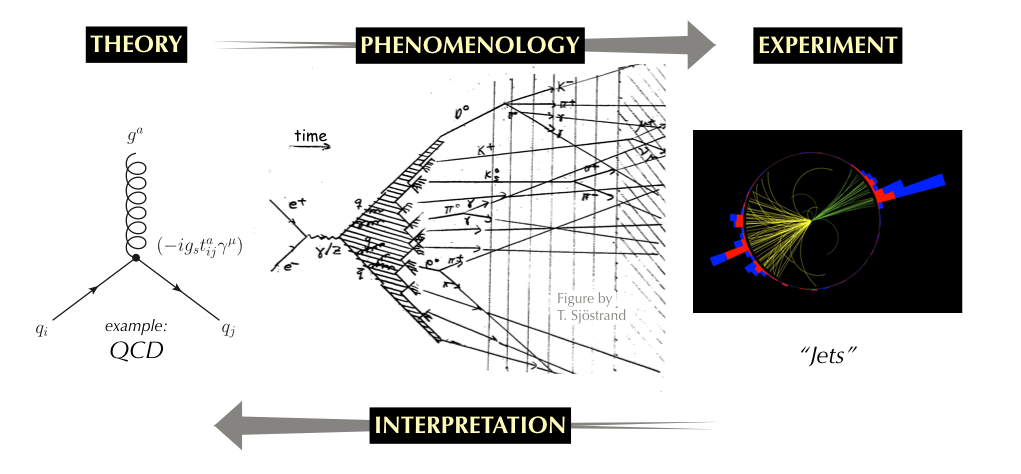
Within the context of the simulations, we can play with the physical laws: introduce new forces or new types of fundamental particles - even change the number of space-time dimensions. Thus, we can gain insight into how new laws of nature would manifest themselves in experiments. This is not only interesting from a theoretical point of view, but has important practical applications. Our experimental colleagues make extensive use of our simulations to plan and design the experiments, and to optimize their searches for "new physics". Here is a list of experimental studies in 2021 which have used our work. We can also modify the way we model or approximate the known laws of nature. By varying the model assumptions we can estimate the resiliency of the theoretical predictions, identifying areas where improvements are needed or where additional physical phenomena may play a role, avoiding conclusions drawn on uncertain grounds. And we can explore new approaches to solving or modeling the underlying physical theory. This is where most of my work goes, trying to achieve as high a level of detail and accuracy as possible.
|
What I really doin less fair English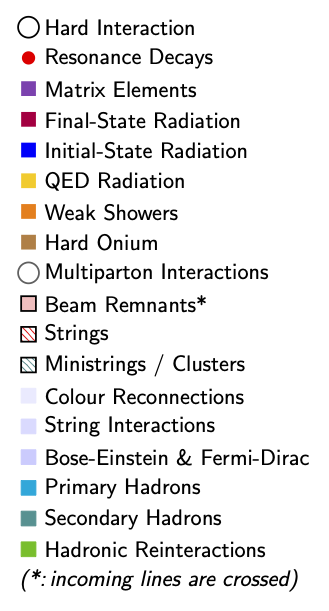
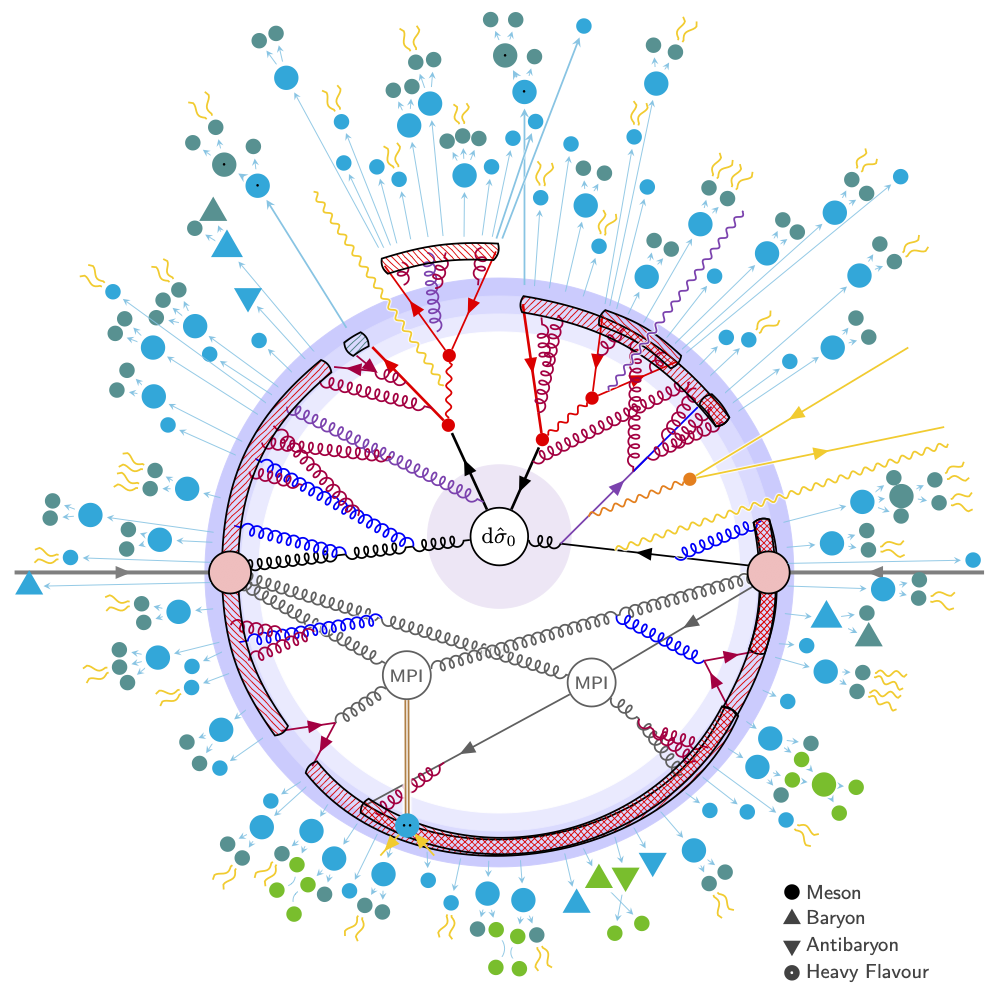
Event generators can be used to generate high-energy-physics "events", i.e. sets of outgoing particles produced in the interactions between two incoming particles. The objective is to provide as accurate as possible a representation of event properties in a wide range of reactions, within and beyond the Standard Model of particle physics, with emphasis on those where strong interactions play a role, directly or indirectly, and therefore multihadronic final states are produced. The physics is then not understood well enough to give an exact description: instead the programs have to be based on a combination of analytical results and various QCD-based models. The calculations are based on quantum field theory, spanning both rigorous solutions and phenomenological models, and are cast as Markov Chains, solved using random-number Monte Carlo methods. The physics areas include hard subprocesses, initial- and final-state parton showers, underlying events and beam remnants, fragmentation and decays, and much more. The programming language of choice is currently C++, with predecessors in FORTRAN. The event generator PYTHIA is a general-purpose vessel for exploring phenomena both within and beyond the Standard Model. It is one of the most widely used tools in high energy physics. Its hallmark feature is the "Lund string model", used to model "hadronization" (the process by which quarks and gluons turn into hadrons). Strings are a universal phenomen that appears in extremely diverse physical systems, from superconductors and superfluids to cosmic strings. The strings in QCD enforce "confinement" - their strong pull locking quarks and gluons away inside nucleons, unable to escape. (If this sounds slightly similar to what black holes do by way of gravity, then perhaps there are even things to be learned by comparing the physics of strings to that of black holes. That's one current research question I would love to know the answer to.) At present, we model QCD strings as simple 1+1-dimensional worldsheets with a tension of about 1 GeV/femtometre, and the string-breakup process by quantum tunneling. My contributions include the development of transverse-momentum-ordered parton showers, a more sophisticated model of the "underlying event" which forms the basis of much of the current modelling of LHC collisions, a fragmentation model for Y-shaped "string junctions" which can appear in exotic new-physics decays and baryon beam-remnants, models of colour reconnections in proton-proton collisions and top quark decays, and interfaces to supersymmetric and other new-physics scenarios. By careful examination of the available experimental constraints on the physics models, I have also provided some of the main parameter sets ("tunes") used by both the experimental and phenomenological communities for theory comparisons, such as the "Perugia" family of tunes for PYTHIA 6 and the more recent "Monash" tune for PYTHIA 8.
|

